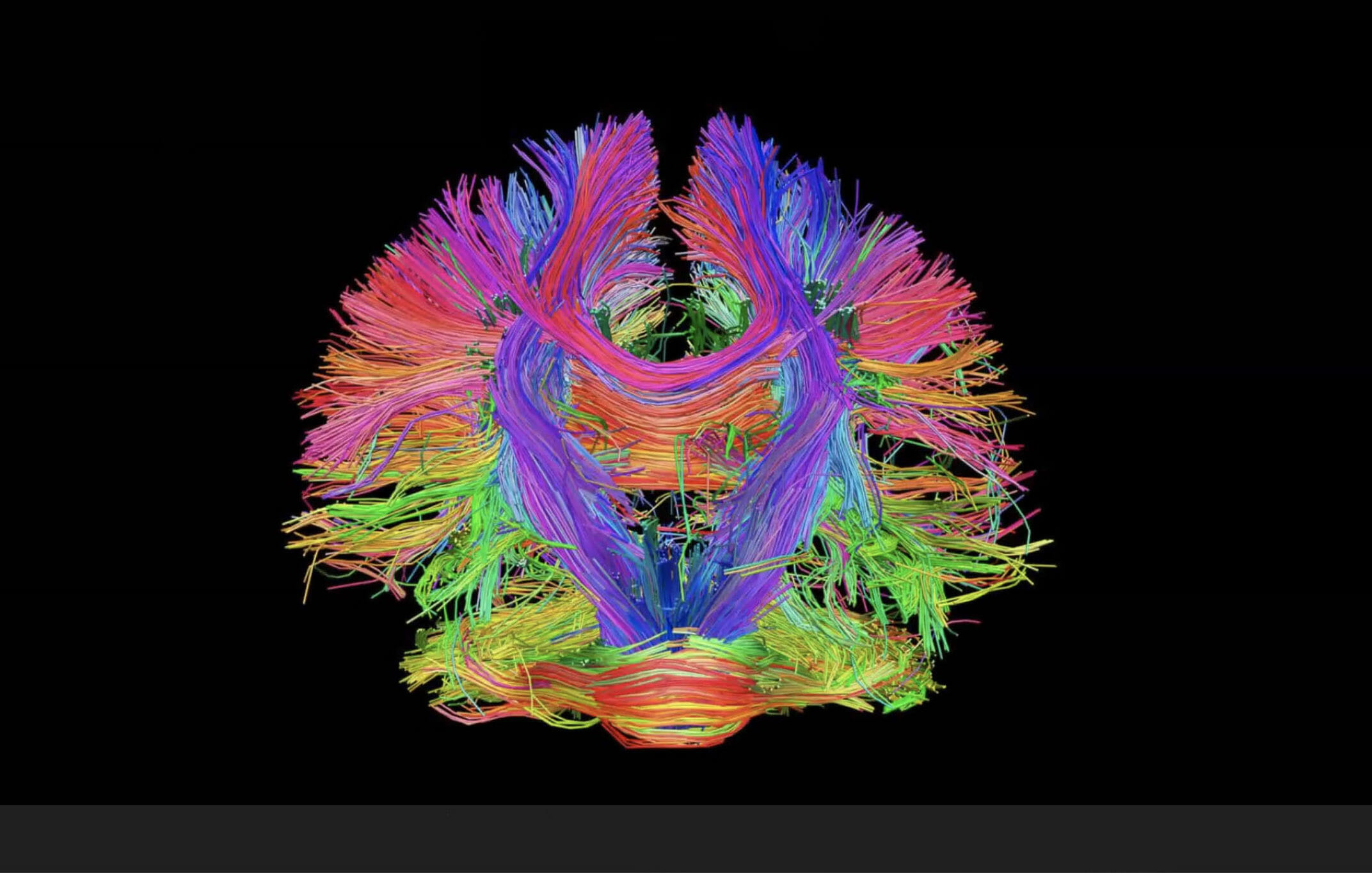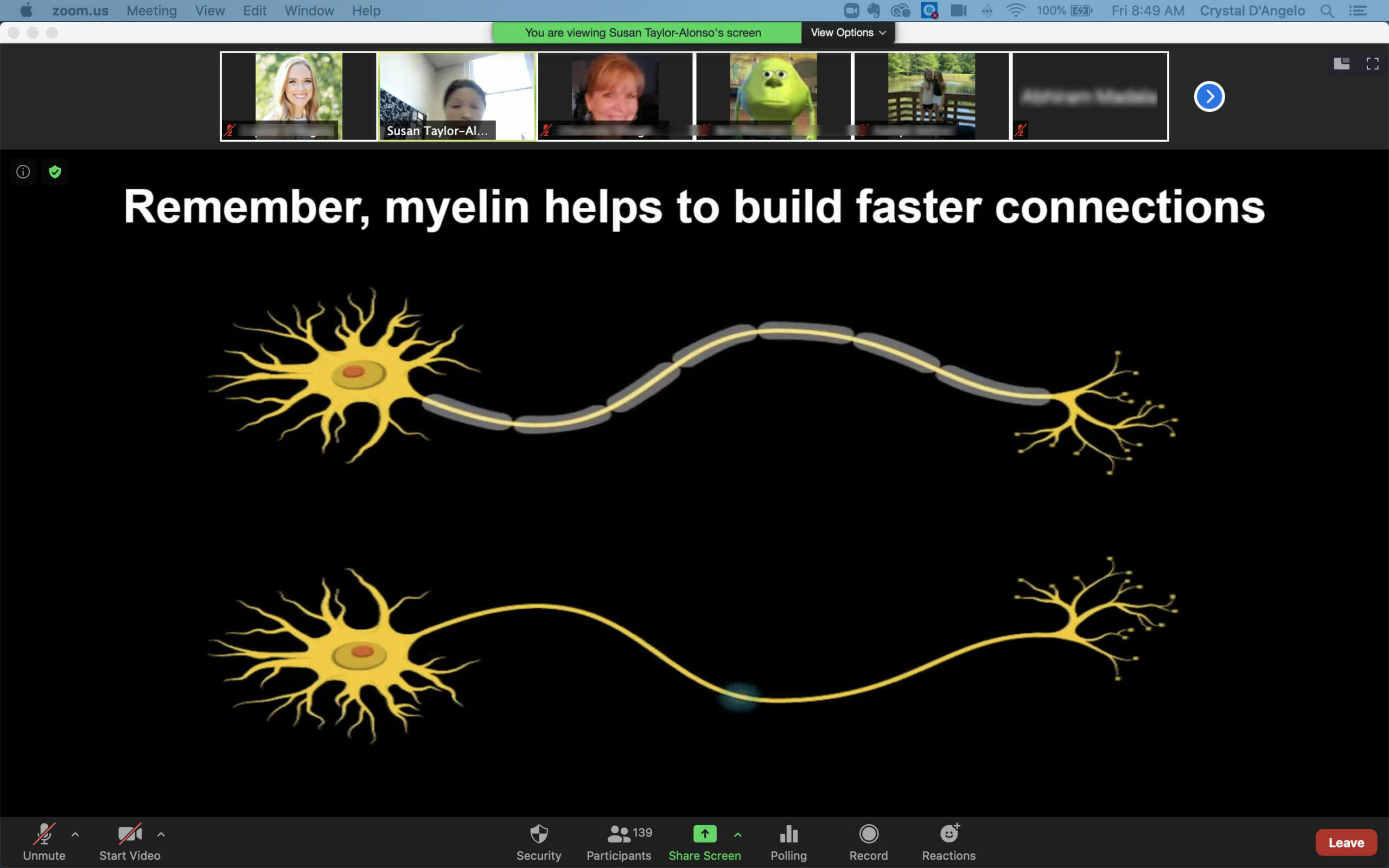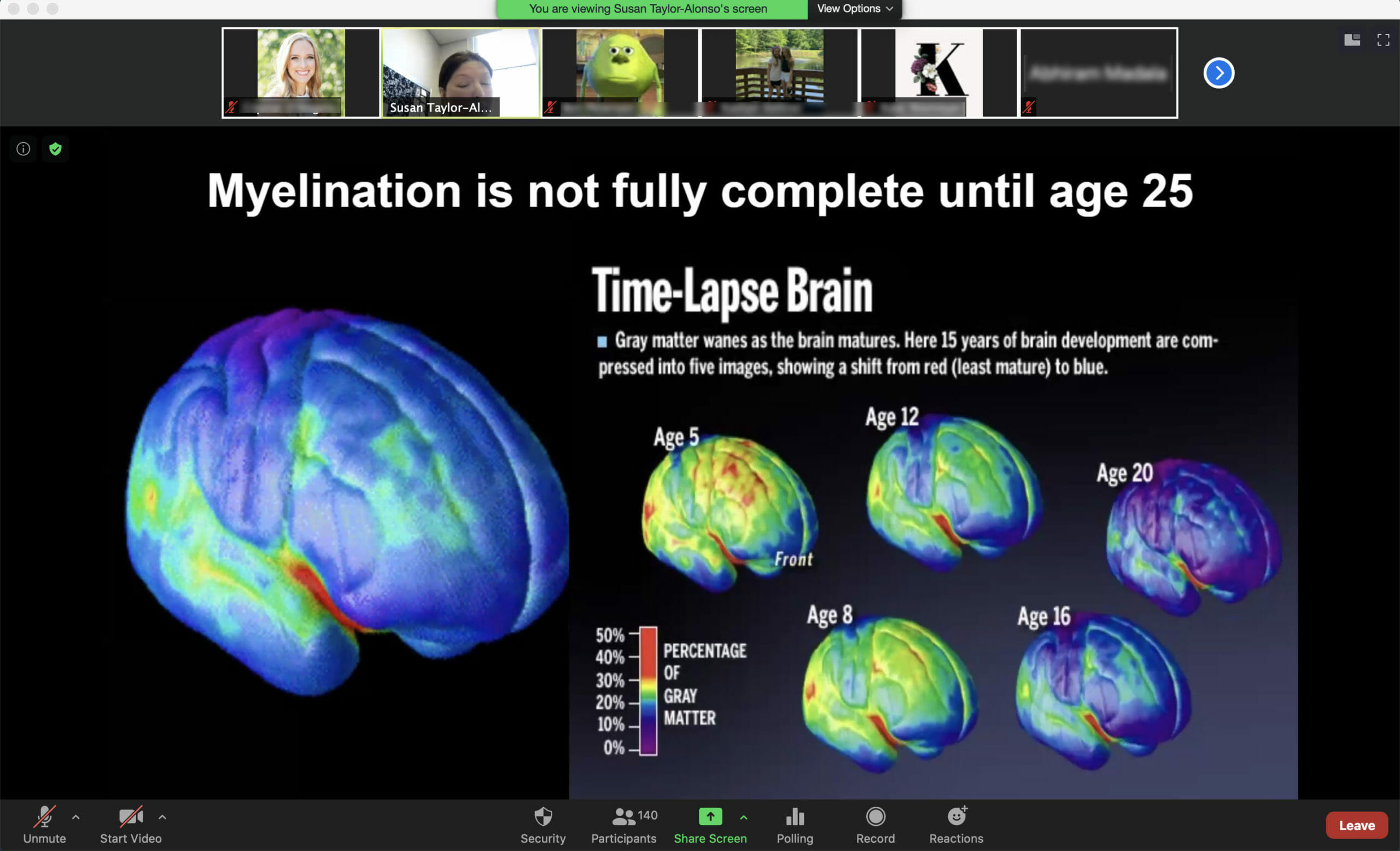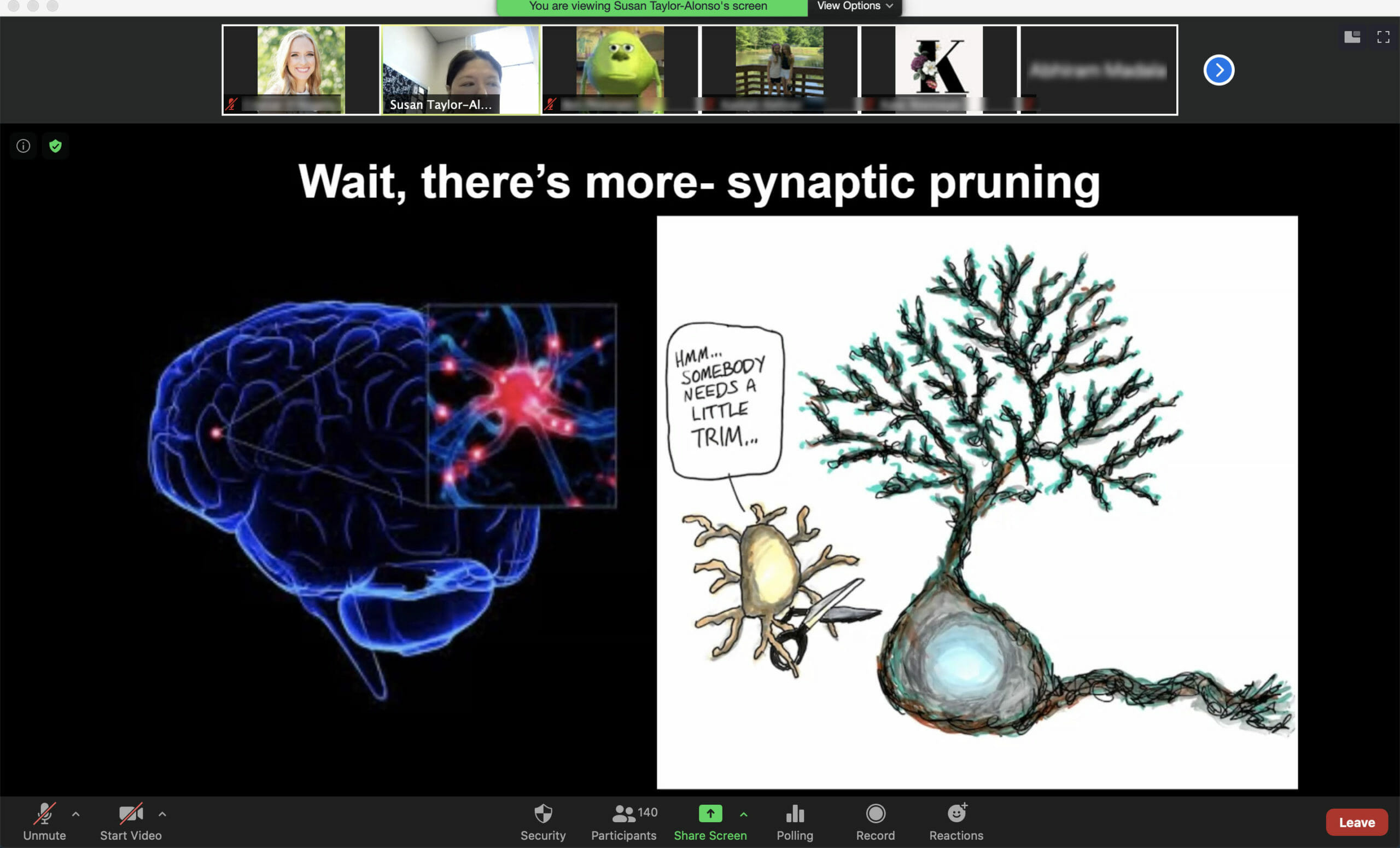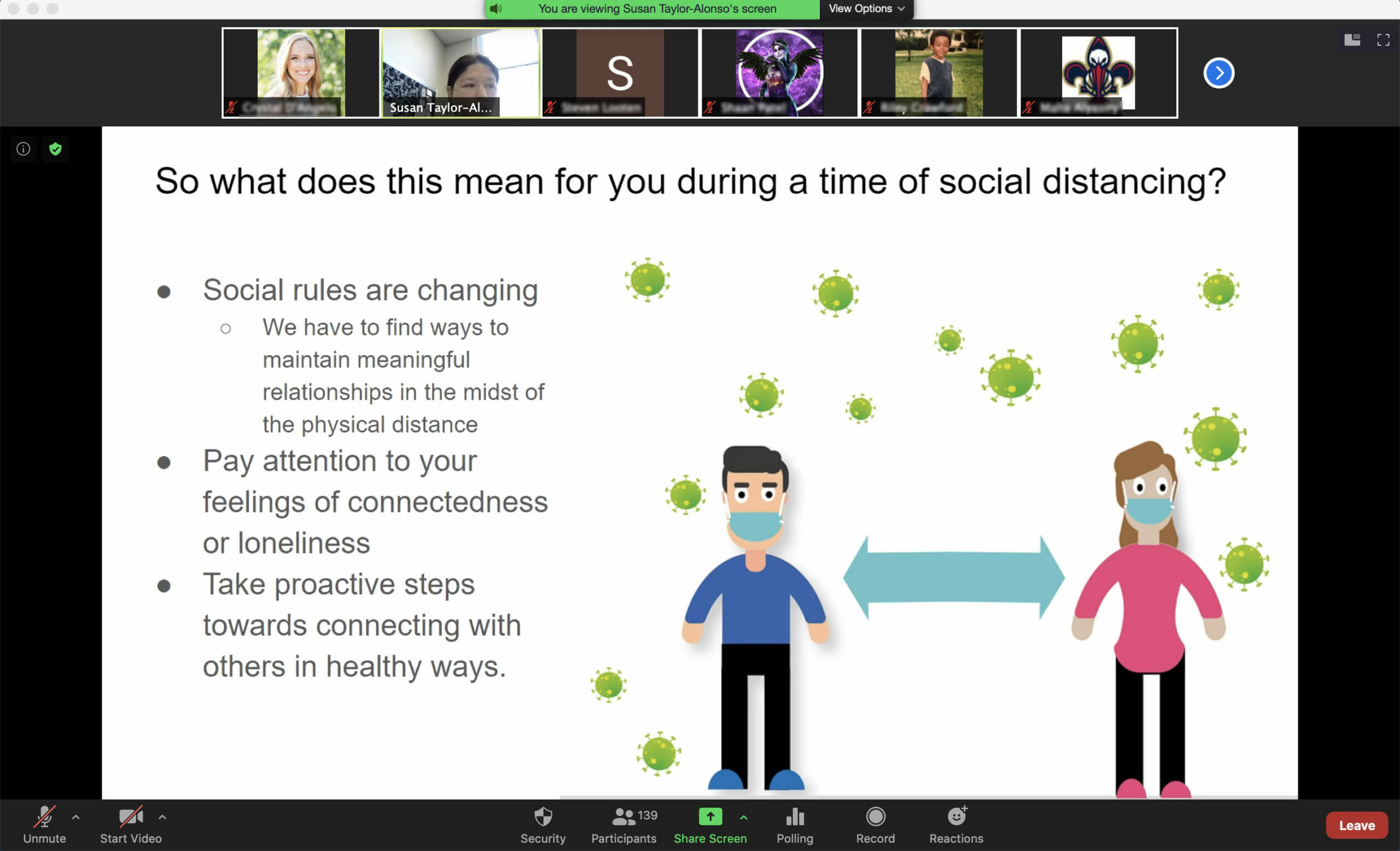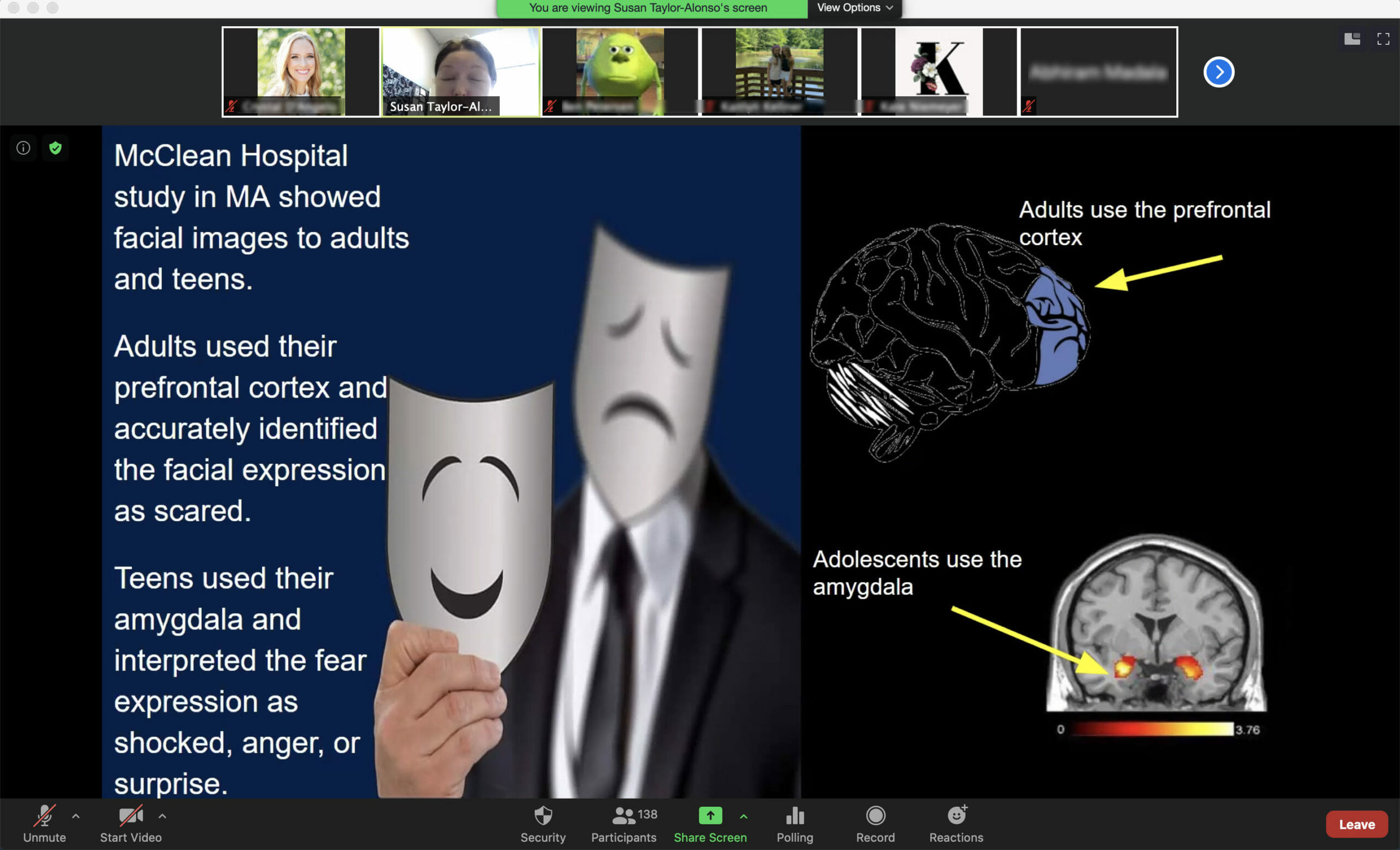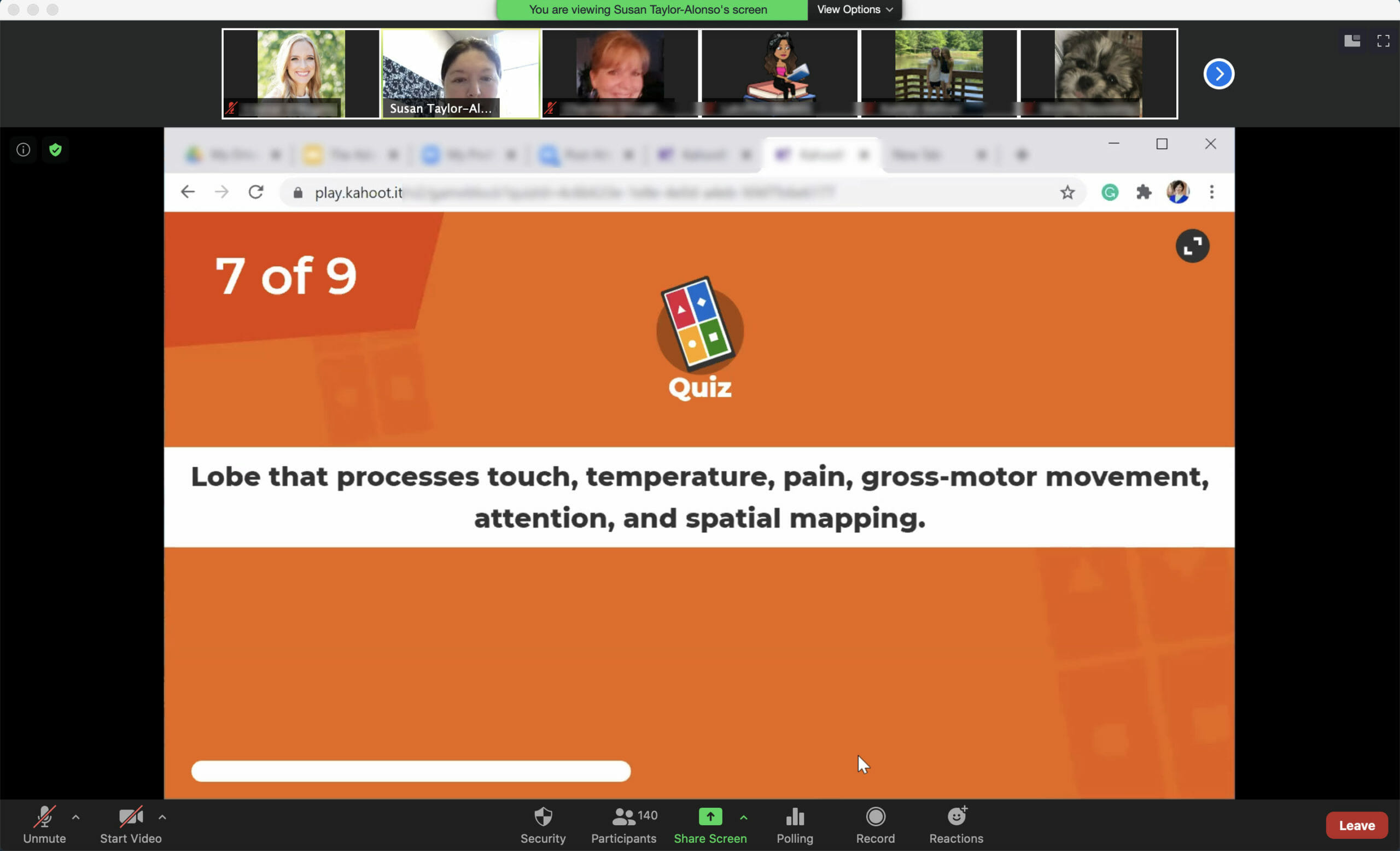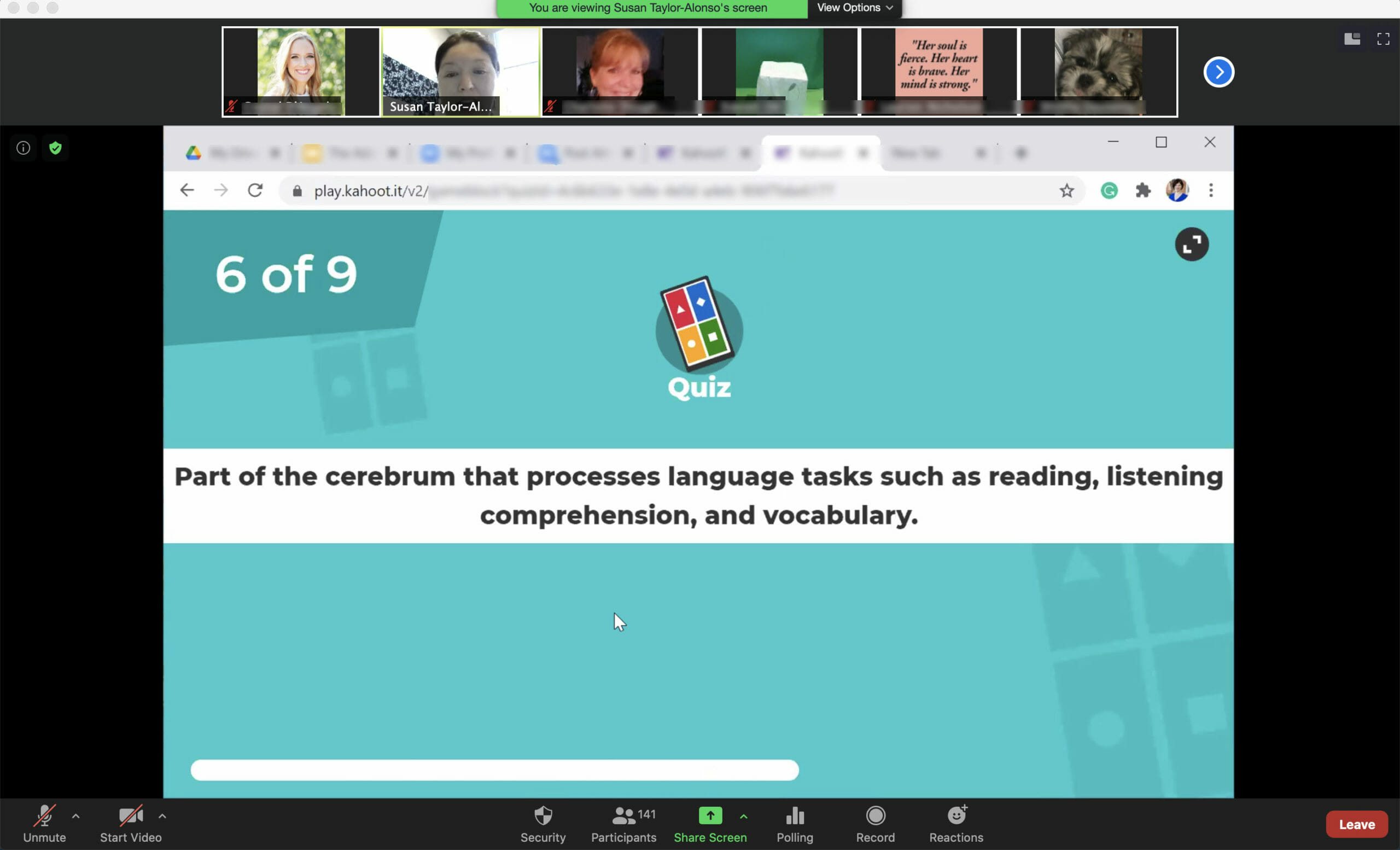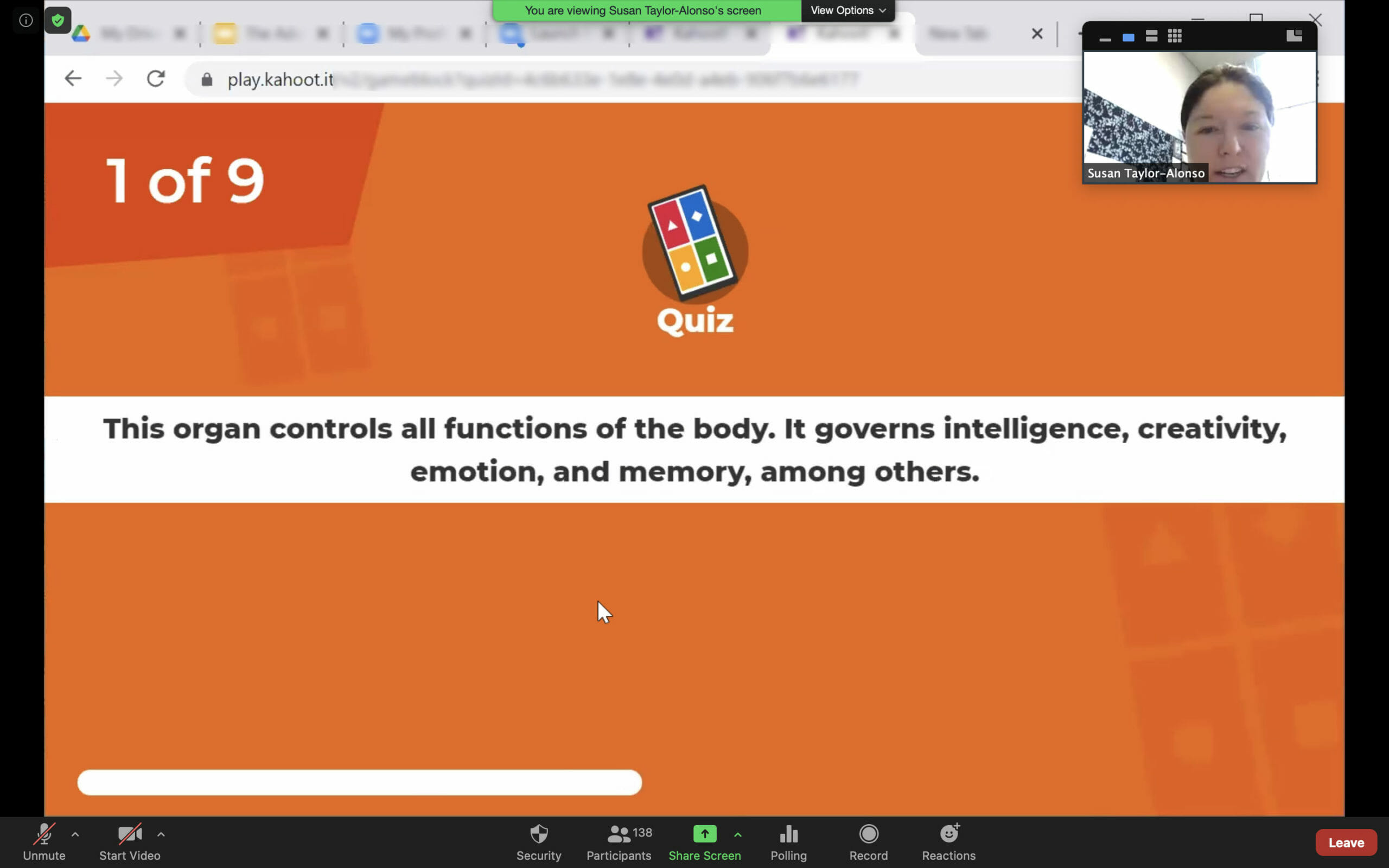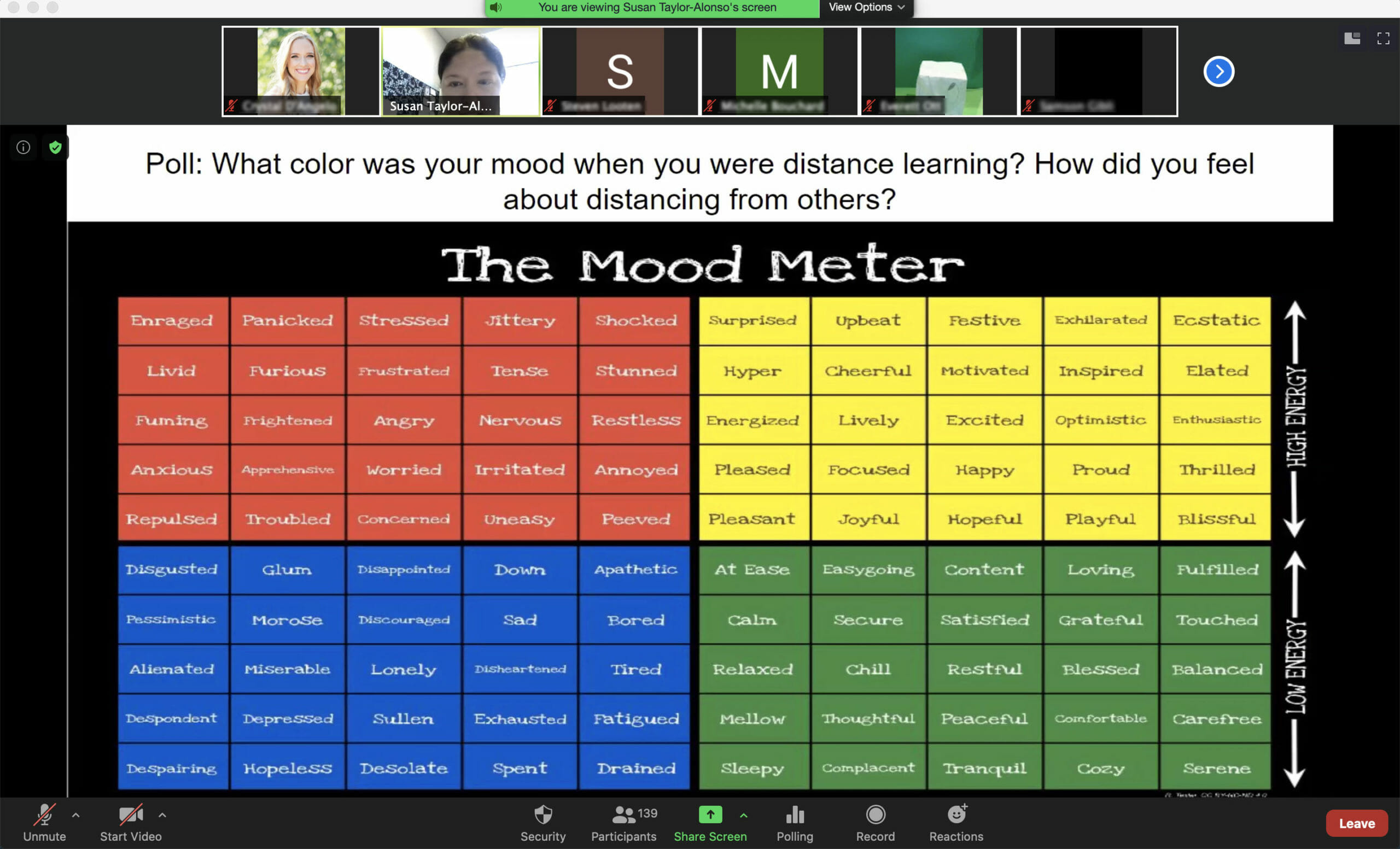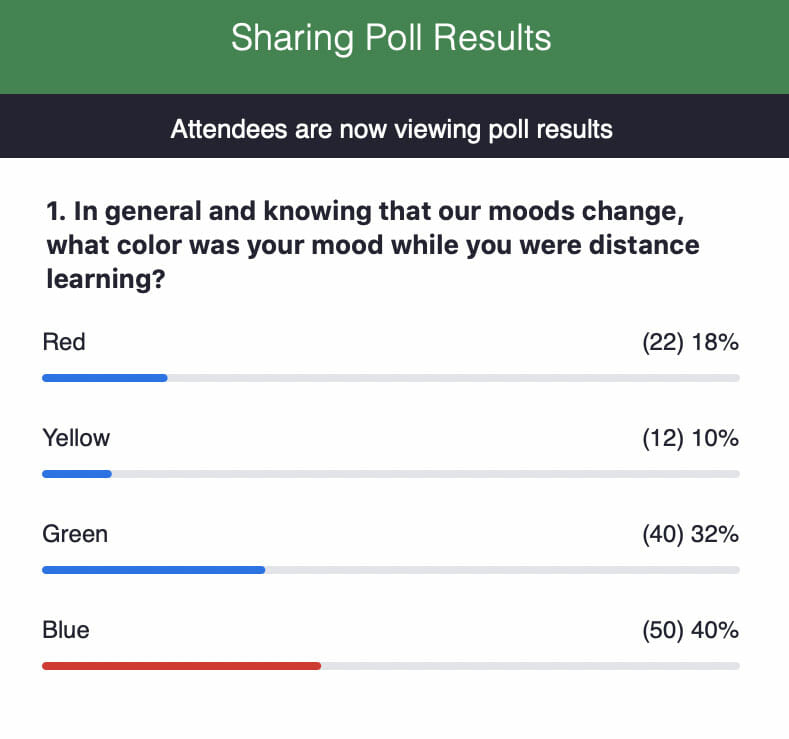Did you know that the brain is not fully developed until the age of 25? In this time of the coronavirus pandemic, have you considered how social distancing impacts how our brain experiences social connection? Have you ever wondered why teenagers decide to take more risks than adults?
Enter Susan Taylor-Alonso, Middle School Learning Specialist, who presented a social emotional learning lesson to all MICDS 7th graders last Friday called “The Head and the Heart – The Adolescent Brain and the Neuroscience of Social Connection.” Her goal for the class was for the 7th graders to understand their own adolescent brain and what happens when they feel socially connected or disconnected.
The lesson began with trivia about brain basics on Kahoot, a game-based learning platform. See if you know the answers to some of the sample questions from the quiz (answers at the end of this article):
- What is the part of the brain responsible for higher levels of cognitive function such as planning, problem-solving, and memory?
- What is the substance around the axon that makes electrical pulses travel faster?
- What is the lobe that processes touch, temperature, pain, gross-motor movement, attention, and spatial mapping?
The trivia game helped students get in the mode of thinking about the brain and the many functions it serves.
Taylor-Alonso then talked about how the adolescent brain is unique. For example, myelin helps build faster connections of electrical impulses along nerve cells. The faster the connections, the easier and more automatic tasks become. Myelination is not fully complete until the age of 25. Therefore, certain tasks such as making sense of our emotions or accurately interpreting facial expressions are less developed and a bit slower for the adolescent brain. Myelin helps electrical impulses move faster through the neural circuitry and helps the brain forge neuro-synaptic connections. “Think about watching a toddler who is trying to walk for the first time or when you first learned to ride a bike,” Taylor-Alonso suggested. Once that skill is mastered, it becomes second nature, but it takes a learning period where the myelin is developing and the synaptic connections strengthen in order to get to that point.
In talking about brain development, students learned that brain maturation does not refer to size. In fact, by the age of six, the brain is 95% of its full size. They also learned that the brain develops from the back to the front, developing the reward centers of the brain first and the areas for making decisions or controlling emotions later on in life.
Taylor-Alonso also encouraged the Middle Schoolers to take healthy risks by trying new things as adolescents. “This helps strengthen synaptic connection,” she shared. “The brain does something called ‘synaptic pruning’ which is a ‘use it or lose it’ concept.” If you don’t use certain parts of your brain, those synapses fall away as if to get rid of the extra weight in the brain. “Play a new instrument, learn a new sport, take an art class!” It keeps your brain active and sharp!
The 7th graders also learned about how it might be harder to interpret the emotional sides of their lives in their current stage of brain development. To illustrate this point, Taylor-Alonso presented a study that compared adult and teenage brains. In the study, participants were asked to look at images of facial expressions. The adults were more accurate in their assessments of the emotions than teenagers. This is due to the fact that adults use the prefrontal cortex (which controls reasoning and thinking before we act) which has yet to develop for teens. Instead, adolescents use the amygdala which is responsible for our immediate reactions (this is commonly referred to as our fight or flight response). Thus, teens also tend to have less inhibition and experience more impulsive behaviors. They have a more active striatum that is oriented toward risk and pleasure-seeking behavior. To channel that, Taylor-Alonso asked the following question which could be helpful to parents of adolescents: “How do I provide opportunities for healthy risks?”
The striatum encodes positive social interaction with reward. When we connect solely through digital platforms, teens and pre-teens use their amygdala, striatum, and prefrontal cortex less. There can be a lot of room for misunderstanding and misinterpretation. “You have to put in extra effort to make sure you’re understood. Our words matter. Kindness matters,” stated Taylor-Alonso.
Lastly, students had the opportunity to reflect on their state of social connection during the time of distance learning. They took a poll to classify their mood at that time. It was interesting that the most common feeling was in the blue range (lonely, tired, disappointed). This helped make the point that positive social connection supports physical health and wellness. “How do we meaningfully connect with our peers in this time of social distancing? How connected or lonely are we feeling?” Taylor-Alonso asked. Although the school is now in a hybrid model of learning, she encouraged students to be sure to take proactive steps toward connecting with others in healthy ways and to consider how the approach they take to socially engage may elicit either a threat response or a reward response in their peers.
Thank you for helping 7th graders understand their heads and their hearts more, Ms. Taylor-Alonso!
Answers to the sample trivia questions: 1) Frontal Lobe, 2) Myelin, 3) Parietal Lobe
